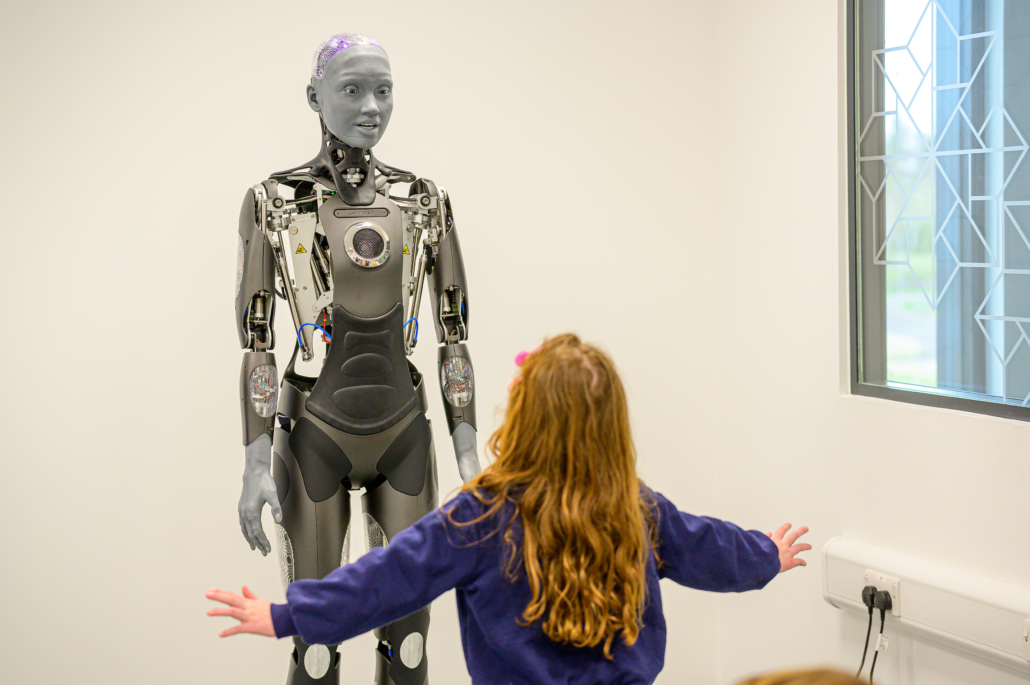The institution’s director of digital learning professor Neil Morris tells PublicTechnology about the range of online courses the university now offers to learners worldwide, as well as how technology is changing the classroom experience
The Parkinson Building is one of the University of Leeds’s most recognisable locations Credit: Tim Green/CC BY 2.0
For professor Neil Morris, the inspiration for creating and implementing a new way of technology-enhanced learning came from the mild terror of his early days as a teacher, looking up and seeing scores of faces listening intently.
“I started out as a teaching fellow in neuroscience,” he says. “I was giving lectures for 250 people, and I was intimidated by all these people hanging on my every word. I started to use technology to break down the barriers, and began recording podcasts and sending them out.”
Since 2013 Morris has held the role of chair of educational technology, innovation, and change at the University of Leeds, as well as being the institution’s director of digital learning.
The Digital Education Service led by Morris was also launched by the university five years ago. His team, which now contains upwards of 50 people, supports teaching staff in developing and delivering digital-learning resources.
Since its formation, the Digital Education Service has been involved in the publication of numerous free massive online open courses (MOOCs) via the Open University’s online FutureLearn platform. Upwards of a million people have accessed them to date, and 46 courses are currently listed, each of which lasts between two and five weeks, with up to five hours of study per week required.
Lecture capture and the other digital resources to support and augment campus-based degrees is a factor in helping students decide whether to come to Leeds
“We create credit-bearing courses that anybody in the world can take,” Morris tells PublicTechnology. “They get [University of Leeds] credit, that they can use that to support an application to [another] university or as part of their professional development.”
Morris says he can, ultimately, foresee a world where it is increasingly common for students to obtain degree credit from a variety of sources.
“I can see a model where credit does not necessarily come from a single university, and people would spend time at different universities [studying] what that university is good at,” he says. “But the whole question around credit transfer would need to be addressed. It also requires a massive change in government policy.”
Leeds already offers a number of master’s courses that can be studied for wholly online. In the longer term, Morris would like to see full undergraduate degrees offered entirely digitally.
“Absolutely – we want that, and we will have it,” he says. “Not everybody wants to go to university for three years and wants that traditional university campus experience.”
Capturing imaginations
But the use of digital is not just confined to remote learning, with technology also now playing a key role in classroom-based teaching.
Also launched in 2013, the lecture-capture project sees teachers record lectures and then host them online for students to revisit at their leisure. Alongside this initiative to record teaching was the creation of the University of Leeds Mediasite, an online platform where authorised users can log in to access “a single system that all staff and students… [can] use to create digital assets, edit them, and publish them”, Morris says.
A total of 76% of lectures are now captured and hosted online, says the digital learning director, indicating that, for teaching staff, “most of the concerns have gone away”.
2013
Year that University of Leeds formed its Digital Education Service
76%
Percentage of lectures that are now recorded via the lecture-capture project
10th
Leeds placing in The Times 2018 Good University Guide – up three places on the prior year
34,000
Number of students at the university, served by 8,000 staff
46
Number of free University of Leeds courses currently available via The Open University’s FutureLearn online platform
£2.8m
Cost of renovation of three teaching spaces to create collaborative lecture theatres
Morris adds that the digital availability of lectures has not harmed students’ participation in the classroom. Indeed, allowing them to respond to the material being taught – rather than simply recording it as best they can – means that students are much more engaged.
“This is not as an alternative to attendance, and we have not seen any significant reduction in attendance,” Morris adds. “It is to supplement the learning experience of being in the room, and is intended to free people up from [taking notes], so they can engage with what is being said. Lecture capture removes that obstacle – and they can take a different kind of note, about what they think, while the capture is a record of what was said. It is very valuable for students whose first language is not English, for example. Dyslexic students also value it very highly.”
The lecture-capture project, and the greater level of classroom participation it allows on the part of the students, feeds into a model of teaching known as “flipped learning”. The concept of flipped learning is that the focus of the learning experience is, as the name suggests, flipped, from the lecturer to the students.
The model typically involves much more interactive and discursive work in class, and regular feedback and assessments to make sure students have grasped the concepts being taught. There is also a focus on learning via a greater variety of activities and material – such as curated audio and video content – rather than the traditional model, where a lecturer gathers students together and process to discharge information oracularly.
“Flipped learning is a much more engaged learning paradigm, and it is much more flexible,” Morris says. 
When asked if the majority of his peers have embraced this new way of teaching, Morris says “I would not say most – but I would say there is a growing proportion that want to change”.
“It goes to the heart of university life,” he adds. “It is easier to do what we have done before than it is to change. To redesign your curriculum, and deliver teaching in a completely different way, requires a huge amount of effort. And that is before you get to the funding problems.”
One project to help lecturers teach in a new way that has been funded is a £2.8m renovation project to create three “collaborative lecture theatres” (pictured left). Rather than rows of seats all directed towards a focal point at the front, the new-look classrooms are split into self-contained pods – each of which can house up to five people. They can also be equipped with a touchscreen device, allowing teachers to share material which students can then engage with in small groups.
The university is also planning to implement an application allowing students to use their smartphone to take part in quizzes and polls. These can be used by teachers to ascertain whether or not all students have fully grasped a concept being taught, and give students the chance to anonymously admit when they do not understand something.
Morris says that such projects can help teachers overcome one of biggest barriers to flipped learning – the physical environment in which teaching takes place.
“There is a traditional lecture paradigm that universities are stuck in. Many academics want to change, and recognise that the traditional lecture is outdated,” he adds. “But we are stuck with the students facing the front, and the concentration of the space forces academics to lecture. Many staff want to change that, and want the classroom to be more discursive and engaging. But the space of a lecture theatre does not allow this to happen.”
Students can take a different kind of note – about what they think – while the lecture capture is a record of what was said. It is very valuable for students whose first language is not English, for example
After half a decade of driving the use of technology in learning, Morris says that the existence of the Digital Education Service speaks to the University of Leeds’s commitment to delivering great teaching.
“Leeds believes in high-quality education,” he says. “In terms of what we say we believe in, education is an equal to research, and we have got deputy vice chancellors for both research and teaching. We also have the Leeds Institute for Teaching Excellence that supports the university.”
But, most importantly, the digital-learning initiatives are appreciated by students.
“I think we know for a fact that lecture capture and other digital resources to support and augment campus-based degrees is a factor in helping students decide whether to come to Leeds,” Morris says. “We have had students saying: ‘we came to Leeds over others because of the online courses’.”
Such positive feedback from students has hopefully made them a less intimidating bunch.



